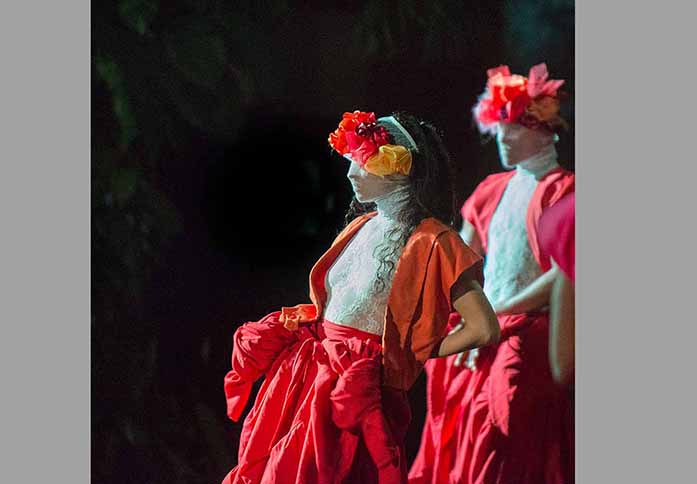By Tessa Solomon
Six years after his death, the presence of Japanese icon and cofounder of the Butoh dance movement Kazuo Ohno still permeates the stage.
Iowa City residents will have the opportunity to experience the creeping, dissonant dance form firsthand when performance artist Takao Kawaguchi presents his new piece,About Kazuo Ohno, as part of his international tour on 8 p.m. Friday and Saturday in North Hall’s Space/Place.
Kawaguchi, whose professional training is in mime, first gained critical acclaim in 1988 with the début of an experimental performance based on the play Talk to Me Like the Rain and Let Me Listen by University of Iowa graduate Tennessee Williams. Today, he is a member of the Japanese intermedia art collective Dumb Type.
Kawaguchi’s logic for tackling the legendary Butoh diva Ohno as his next project is articulated plainly enough in the artistic statement found on his website.
“It suddenly popped into my head: I want to become Kazuo Ohno,” the statement reads.
That spontaneous thought spawned a deep, consuming desire in Kawaguchi to bring the spirit of Ohno to the modern stage. Because Kawaguchi had never actually seen Ohno perform in person, he was forced instead to study the creeping, dissonant undulations and twists of Ohno’s body — an unnerving and innovative movement — from videos and photography stills.
Attempting to recreate the presence of Ohno became not only an artistic experiment but a personal challenge to Kawaguchi’s own sense of artistic expression
“In my performances, the focus has been the relationship between the self and space instead of what happens between body and self,” he said. “I thought Ohno was the best model for relating shape and soul.”
Ohno pioneered the Butoh form in the shadow of Japan’s 20th century postwar landscape. The style came as a rejection of the aesthetic pleasures of Western dance, the movements of which Butoh’s founders — Ohno and fellow choreographer Hijikata Tatsumi — found too polished, too pretty. Instead, the duo championed dance as a means to process the rawer, more haunting facets of human nature: pain; loneliness; war.
Ohno’s seminal work, Jellyfish Dance, informed by his memories as a POW in World War II, positions at its center the searing image of jellyfish swimming among the floating corpses of Japanese soldiers slain by weapon fire, hunger, and disease.
“The best thing someone can say to me is that while watching my performance they began to cry,” Ohno famously said in an interview from the ’70s. “It is not important to understand what I am doing; perhaps it is better if they don’t understand but just respond to the dance.”
For Ohno’s original intentions to still resonate with the audience, even when delivered through the body of another, was one of the primary problems Kawaguchi found himself returning to as he worked through the pieces.
“The smaller details I become aware of, the more things I have to consciously do differently to internalize the movements as if they were my own, otherwise I wouldn’t be able to reach the soul,” Kawaguchi said.
Kawaguchi noted the success of that internalization can be seen in the audience’s reaction, as they process the melding of Ohno’s legacy within the fluid movements of Kawaguchi.
“Interesting things happen during shows,” he said. “Some audience members have seen Ohno in performance before — they have a memory of him, so they double the image of him with me. And I accept that; it doesn’t mean I’m doing well or badly.”
Even though duplication is the intention, the potential for a loss of identity can be concerning. Kawaguchi finds strength, though, in knowing the differences between him and his idol can never fully be erased.
“I went to a disciple of Ohno, and he said that even if I get really close the complete copy, there would still be a margin that would never disappear, it represents me,” he said. “This comment encouraged me in my efforts to get close to him.”
Whether the weekend’s audience will be lost despite that razor-thin margin is yet to be decided.
“When audiences see a doubling, they think it is a trick,” Kawaguchi said. “They are not sure who it is, what they are seeing.”



